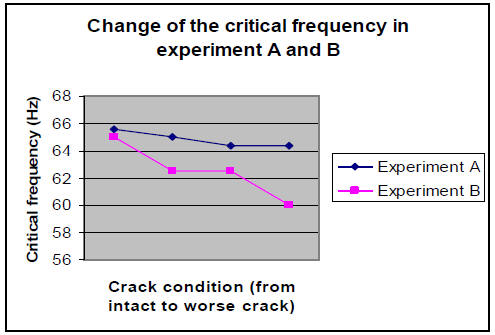Simulation and Vibration Analysis of Shaft Cracks
Fei Xie, Lin Liu & Suri GaneriwalaSpectraQuest Inc., 8227 Hermitage Road, Richmond, VA 23228
Published: April, 01 2007
Abstract
A Shaft crack is one of the most common defects in a rotor system and detection of such shaft crack is a very serious matter. In this study, shaft cracks were simulated and analyzed using SpectraQuest's rotor Machinery Fault SimulatorTM (MFS). A series of experiments were conducted to observe the behavioral changes of the cracked shaft in critical speed, 1X and 2X frequency responses. The experimental results were found to be consistent with the theoretical prediction of the shaft crack.
Introduction
A shaft crack is a slowly growing fracture of the rotor. If undetected in an operating machine, as a crack grows, the reduced cross section of the rotor will not able to withstand the dynamic loads applied to it. When this happens, the rotor will fail in a fast brittle fracture mode. The sudden failure releases a large amount of energy that is stored in the rotating system, and the rotor will fly apart. This kind of failure may cause serious injury or even death to anyone unfortunately standing near the machine at that moment. Obviously, shaft crack detection is a very serious matter, and machines that are suspected of having a crack must be treated with the utmost caution.
Cracks are initiated in the shaft in regions of high local stress. Shafts are subjected to large-scale stresses due to bending, torsion, static radial loads, constrained thermal bows, thermal shock, and residual stresses from heat treatment, welding and machine operations. All of these stresses combine to produce a local stress field that changes periodically. In a small, local region where stresses exceed the maximum that the material can withstand, a crack will form in the material.
If the cyclic stresses are sufficiently high, the leading edge of the crack will slowly propagate so that the plane of the crack is perpendicular to the orientation of the tensile stress field. The orientation of this stress field is determined by the type of stress (bending or torsional) and by geometric factors. If the rotor is subjected only to simple bending stresses, then the stress field will be oriented along the long axis of the rotor, and the crack will propagate directly into and across the rotor section, forming a transverse crack. The pure torsional stress will produce a tensile stress field that is oriented at 45o relative to the shaft axis. A crack in this stress field will propagate into the rotor and tend to form a spiral on the shaft surface. Bending stress, however, is usually the dominant component, thus the crack will usually propagated into the rotor more or less as a transverse crack.

Fig 1: Changes of critical speeds as the crack conditions change





